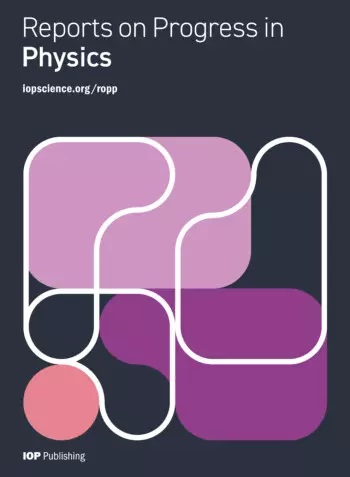开普勒任务:发展和概述
IF 19
1区 物理与天体物理
Q1 PHYSICS, MULTIDISCIPLINARY
引用次数: 132
摘要
开普勒任务是美国宇航局于2009年发射的一个空间天文台,在四年的时间里监测17万颗恒星,以确定地球大小和更大的行星在类太阳恒星的可居住区域内或附近的频率,这些行星的大小和轨道分布,以及它们所围绕的恒星的类型。开普勒是美国宇航局探索计划系列任务中的第十个,这些任务是竞争性选择的,pi指导的,中等成本的任务。从1983年开始,艾姆斯研究中心在18年的时间里开发了任务概念和各种仪器原型。为完成任务所需的10ppm测光技术的发展需要数年的实验,几个研讨会,在建造飞行仪器之前探索了许多“死胡同”。从1992年美国宇航局发现计划开始,开普勒任务的概念在2001年被接受为任务发展之前被提出了五次。在此期间,这个概念从L2轨道上的光度计演变为在50平方度视场(FOV)内监测6000颗恒星的光度计,到在日心轨道上同时监测17万颗恒星的光度计,视场为105平方度。迄今为止,对数据的分析已经发现了超过4600颗候选行星,其中包括数百颗地球大小的候选行星,1000多颗已确认的行星,以及位于宜居带(HZ)的地球大小的行星。这些发现为估计银河系中行星的频率提供了必要的信息。任务的结果表明,大多数恒星都有行星,其中许多行星的大小与地球相似,并且拥有几颗行星的系统很常见。虽然HZ中的行星很常见,但很多都比地球大得多。本文章由计算机程序翻译,如有差异,请以英文原文为准。
KEPLER Mission: development and overview
The Kepler Mission is a space observatory launched in 2009 by NASA to monitor 170 000 stars over a period of four years to determine the frequency of Earth-size and larger planets in and near the habitable zone of Sun-like stars, the size and orbital distributions of these planets, and the types of stars they orbit. Kepler is the tenth in the series of NASA Discovery Program missions that are competitively-selected, PI-directed, medium-cost missions. The Mission concept and various instrument prototypes were developed at the Ames Research Center over a period of 18 years starting in 1983. The development of techniques to do the 10 ppm photometry required for Mission success took years of experimentation, several workshops, and the exploration of many ‘blind alleys’ before the construction of the flight instrument. Beginning in 1992 at the start of the NASA Discovery Program, the Kepler Mission concept was proposed five times before its acceptance for mission development in 2001. During that period, the concept evolved from a photometer in an L2 orbit that monitored 6000 stars in a 50 sq deg field-of-view (FOV) to one that was in a heliocentric orbit that simultaneously monitored 170 000 stars with a 105 sq deg FOV. Analysis of the data to date has detected over 4600 planetary candidates which include several hundred Earth-size planetary candidates, over a thousand confirmed planets, and Earth-size planets in the habitable zone (HZ). These discoveries provide the information required for estimates of the frequency of planets in our galaxy. The Mission results show that most stars have planets, many of these planets are similar in size to the Earth, and that systems with several planets are common. Although planets in the HZ are common, many are substantially larger than Earth.
求助全文
通过发布文献求助,成功后即可免费获取论文全文。
去求助
来源期刊

Reports on Progress in Physics
物理-物理:综合
CiteScore
31.90
自引率
0.00%
发文量
45
审稿时长
6-12 weeks
期刊介绍:
Reports on Progress in Physics is a highly selective journal with a mission to publish ground-breaking new research and authoritative invited reviews of the highest quality and significance across all areas of physics and related areas. Articles must be essential reading for specialists, and likely to be of broader multidisciplinary interest with the expectation for long-term scientific impact and influence on the current state and/or future direction of a field.
 求助内容:
求助内容: 应助结果提醒方式:
应助结果提醒方式:


